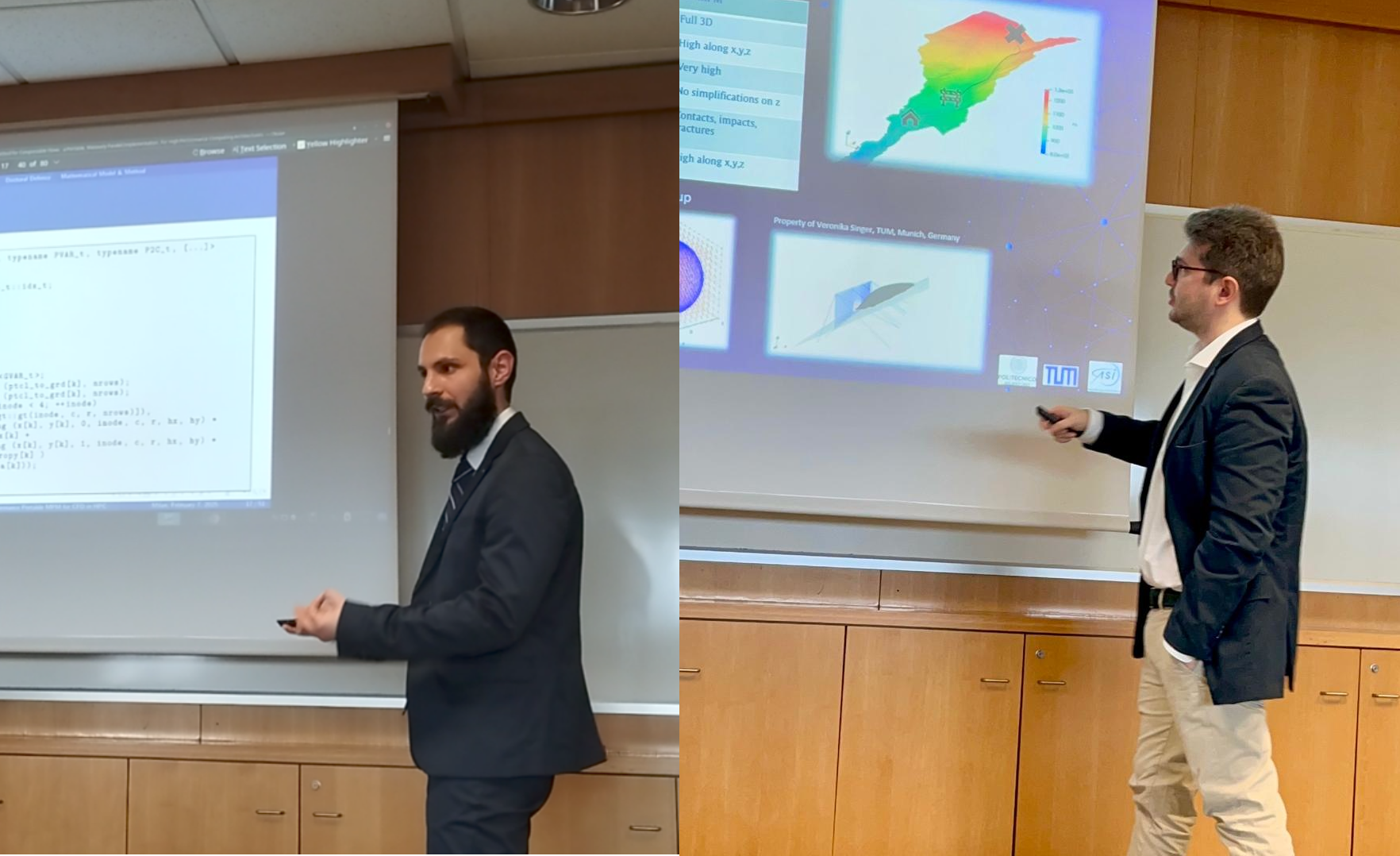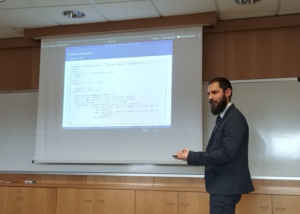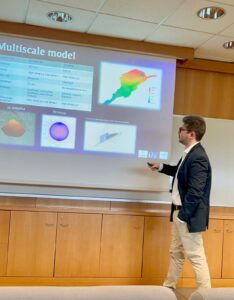

Paolo Joseph Baioni
Title of the PhD Thesis: Material Point Method for Compressible Flows: A Portable, Massively Parallel Implementation for HPC Architectures
Advisors: Dott. Luigi Capone (Leonardo Labs), Prof. Carlo de Falco (Politecnico di Milano)
Area of Mathematics: High-Performance Computing
PhD Committee Members: Prof. Paola Francesca Antonietti (Politecnico di Milano), Prof. Mario Putti (Università degli Studi di Padova), Prof. Simone Scacchi (Università degli Studi di Milano)
In his thesis, Paolo Joseph Baioni conducted a study on the potential of particle-based numerical methods as effective solvers for compressible flows within the domain of High-Performance Computing (HPC). Specifically, he developed a portable and highly parallel Material-Point Method solver tailored for gas dynamics, optimised for Graphics Processing Units. Baioni's work investigated the accuracy, portability, and efficiency of the solver, constituting a first step towards an HPC, monolithic solver for Fluid-Structure Interaction problems, accommodating Mach numbers up to the supersonic regime.

Marco Fois
Title of the PhD Thesis: Particle-Based Numerical Methods for Landslides: Run-Out and Impact Analysis
Advisor: Prof. Luca Formaggia (Politecnico di Milano)
Co-advisors: Prof. Carlo de Falco (Politecnico di Milano), Prof. Simona Perotto (Politecnico di Milano)
Area of Mathematics: High-Performance Computing
PhD Committee Members: Prof. Paola Francesca Antonietti (Politecnico di Milano), Prof. Mario Putti (Università degli Studi di Padova), Prof. Simone Scacchi (Università degli Studi di Milano)
In his doctoral thesis, Marco Fois addressed the issue of climate change and the associated hydrogeological risks, with a particular focus on landslide phenomena such as mudflows and debris falls. His main objective was the development of advanced numerical models, emphasizing particle-based methods for the simulation of such events, particularly in the runout phase and the impact phase with protective structures. The first part of his work described the development of a semi-conservative variant of the Material Point Method (SC-DAMPM), which proved particularly effective in handling large deformations and analyzing interactions with structures. This innovative methodology combined a Lagrangian description of the material with an Eulerian formulation, enabling detailed simulations even in complex scenarios. In the second part, he integrated the MPM model into a multiscale approach that combined two-dimensional and three-dimensional simulations, allowing for accurate predictions of the forces and impact energy exerted by landslides on infrastructures and the environment.
